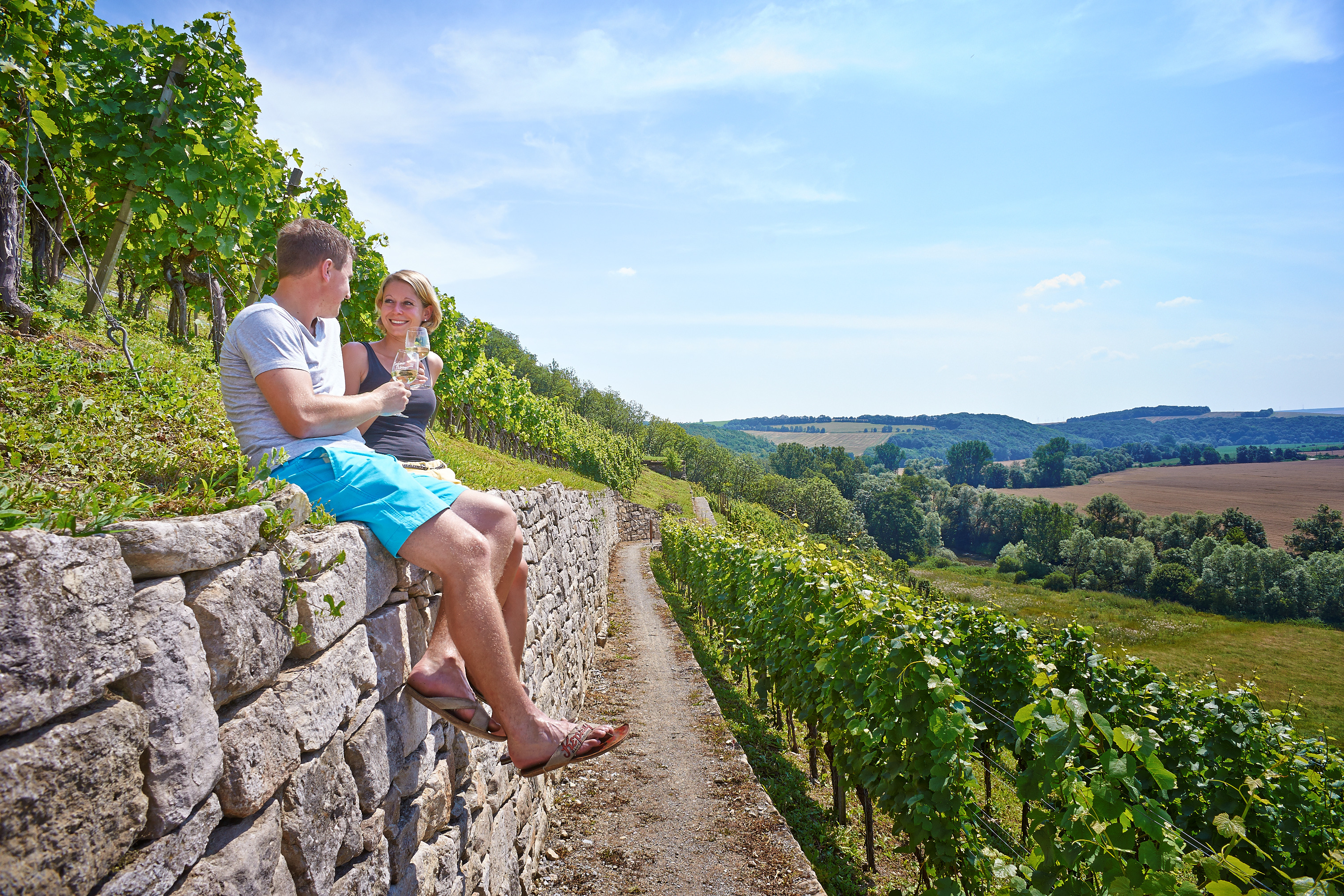
Delicious Lutherland
Specialties, Traditions, and Hospitality
Culinary Tips
Indulging from A to Z in Lutherland is quite a challenge. But it’s not impossible. It just depends on the right time management. To get you started, we’ll give you a few tips on traditional products that you must try.
B for Baumkuchen
The inventor of Baumkuchen is unknown. However, it is certain that the most famous Baumkuchen has been coming from Salzwedel since 1807. Its name comes from the delicate "annual rings" that become visible after slicing. These rings are the result of a complex manufacturing process, where many layers of dough are carefully and slowly applied to a roller and stacked on top of each other. In the end, the round final product is coated with chocolate. A delicacy fit for kings, even today.
Salzwedel Baumkuchen ©Investitions- und Marketinggesellschaft Sachsen-Anhalt mbH
H for Halloren
The Halloren Balls are an exquisite chocolate specialty from the oldest chocolate factory in Germany, founded in 1804 in Halle. These delicacies have their roots in the tradition of the Halloren, the salt workers, whose uniform buttons inspired the design of the balls. The Halloren Balls are known for their variety of fillings, ranging from classic chocolate to innovative combinations.
L for Luther Beer
Of course, such a thing exists. Luther was known to enjoy beer very much, and his wife Käthe was also skilled in brewing. Today's "Luther Beer" may not be the original recipe from Mrs. Luther, but it is enjoyed by beer connoisseurs of the 21st century. It is brewed in the Catholic region of Eichsfeld in Thuringia, making it interreligious or perhaps a sign of reconciliation. After all, beer connects people.
R for Rotkäppchen
This refers not to the little girl in the red hood who saves her grandmother from the wolf, but to Germany's most famous sparkling wine brand. It is based in Freyburg an der Unstrut. The historic sparkling wine cellar now houses the "Rotkäppchen Experience World," where visitors can interactively dive into the history, flavors, and possibilities of the fine beverage. Tastings are included.
Exhibition and Museum of the Rotkäppchen Sparkling Wine Cellar in Freyburg©Investitions- und Marketinggesellschaft Sachsen-Anhalt mbH, Alf Maron
S for Saale-Unstrut Wine
Fruity white wines and velvety reds thrive where the Unstrut flows into the Saale. The tradition in Germany's northernmost quality wine-growing region dates back over a thousand years. Near towns like Bad Sulza, Naumburg, or Freyburg, there are large and small wineries where you can sample the varieties. There are tastings and vineyard picnics. Restaurants on vineyard terraces invite you to discover the local varieties. In autumn, traditional wine festivals are celebrated. Simply a delight.
Vineyard Blütengrund in Naumburg©SUT, Transmedial
T for Thuringian Rostbratwurst
There are many bratwurst specialties, but only one Thuringian Rostbratwurst. The oldest recipe dates back to 1404. It is available almost everywhere in Lutherland, at snack stands and in restaurants. The authentic Thuringian Rostbratwurst is traditionally prepared on a charcoal grill. It is eaten with mustard (ketchup gives away the unsuspecting tourist!) in a roll to go. Most taverns also offer it, often served with potatoes and sauerkraut.
In Mühlhausen, beer, bratwurst, and Bach come together delightfully. On a tour through the picturesque old town, you will get to know the places associated with Johann Sebastian Bach as well as sites of Reformation history. Beer and bratwurst tastings are also included. Afterwards, a visit to the 1st German Bratwurst Museum is recommended.
Header: Saale-Unstrut wine region ©Ralph Kallenbach, Fremdenverkehrsverband Weimarer Land






